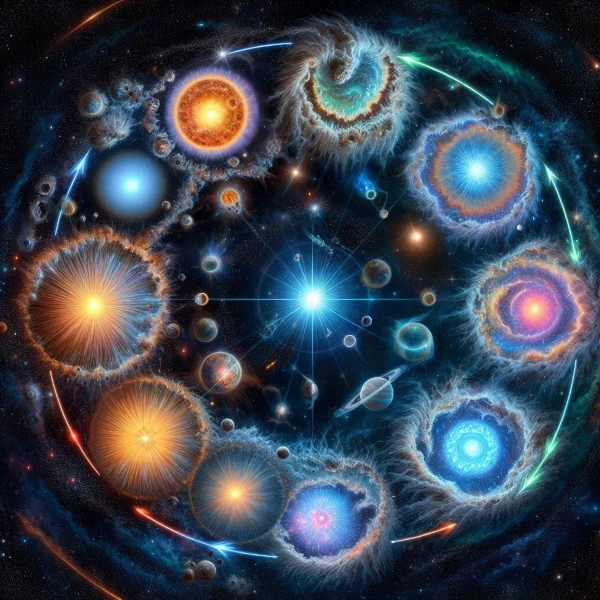
Image credit AI
Stars, like our Sun, are enormous balls of gas that shine in the sky. They are very far from us, but they emit so much light that we can see them at night.
Stars shine because of a special reaction happening inside them. They are mainly made up of gases called hydrogen and helium. At the center of a star, it is extremely hot, and the pressure is very high. These conditions cause a reaction called "nuclear fusion".
Nuclear fusion allows hydrogen to transform into helium, and this transformation releases a lot of energy in the form of light and heat. This energy is what makes the star shine.
Stars remain bright and hot for billions of years thanks to nuclear fusion. As long as there is enough hydrogen to continue the reaction, the star keeps shining.
When a star has used up all its hydrogen, it starts to change. Some stars grow much bigger and become "red giants". Then, they eventually die and sometimes turn into a "white dwarf", a "neutron star", or even a "black hole".
Every star has a different fate, and it depends on its size.
Yes! The Sun is a star like any other. It's just much closer to us, so it looks much bigger and brighter than the other stars we see in the sky.